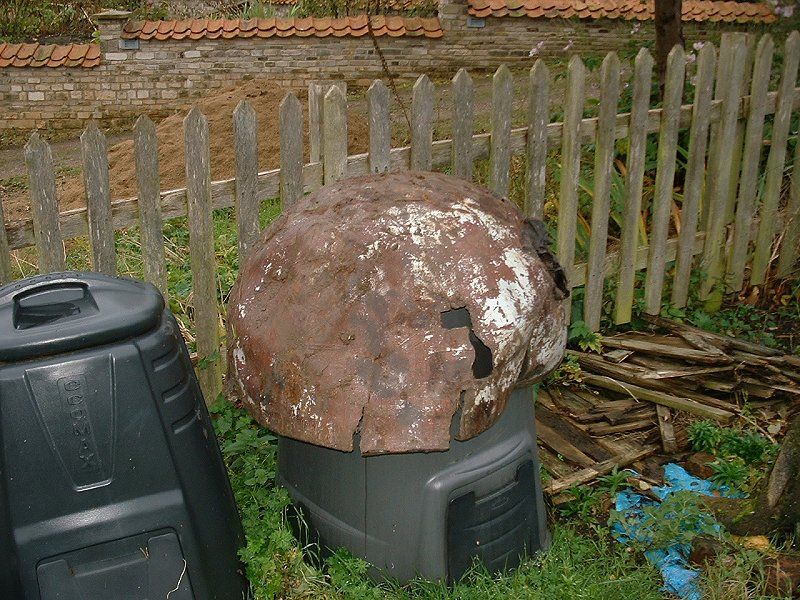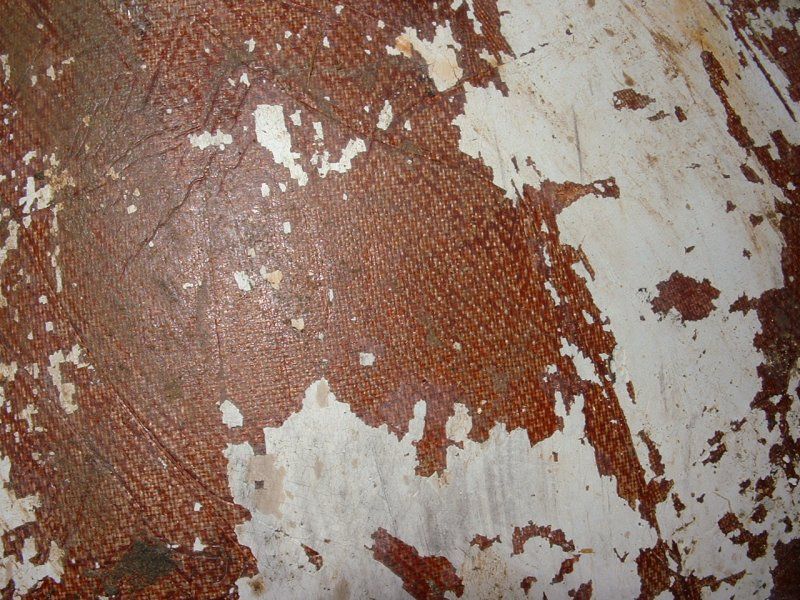Black Widow radome paint
Tue Sep 02, 2014 4:36 pm
Anybody know what kind of paint they used on P-61 radomes, when they weren't left bare? Were they painted simply to hide the "secret" radar dish, since the bare radomes became translucent when backlit? Or was it just cosmetic? I would think if it were the latter, the paint would have had to be totally radar-transparent, since I can't imagine anybody valuing cosmetics over radar range.
Re: Black Widow radome paint
Tue Sep 02, 2014 5:45 pm
Painted as part of the general camouflage. Most non-metallic paints (from that era anyhow) won't affect a radar signal. Also, nose radomes are subject to erosion so you would prefer that the paint erode rather than the fiberglass itself. Putting on fillers or more fiberglass will affect the signal though as the thickness of the radome is chosen based upon the wavelength of the antenna.
Re: Black Widow radome paint
Tue Sep 02, 2014 6:25 pm
Another common radome was blown perspex covered with doped fabric. At the wavelengths early radars worked at the thickness of the material wasn't nearly as critical as later ones
Re: Black Widow radome paint
Tue Sep 02, 2014 6:29 pm
Another common radome was blown perspex covered with doped fabric.
On P-61s?
Re: Black Widow radome paint
Tue Sep 02, 2014 8:08 pm
Stephan Wilkinson wrote:Another common radome was blown perspex covered with doped fabric.
On P-61s?
In general, but I do seem to recall seeing a photo with a very backlit dish in it. I don't think it would have had the clarity with any fibreglas I've ever worked with.
Re: Black Widow radome paint
Tue Sep 02, 2014 8:58 pm
Interesting. I've seen some of those backlit photos, and you're probably right. The last airplane I built was made of wood (Falco), so I don't know from Fiberglas.
Re: Black Widow radome paint
Tue Sep 02, 2014 9:03 pm
Well, what paint was used on the radomes of Corsair and Hellcat nightfighters, PBJs, and so forth? I've never heard that it was any particular special stuff. 
Re: Black Widow radome paint
Tue Sep 02, 2014 9:26 pm
Were they painted, or were they simply white Fiberglas?
Re: Black Widow radome paint
Tue Sep 02, 2014 10:09 pm
Stephan Wilkinson wrote:Were they painted, or were they simply white Fiberglas?
They had to have had paint or some coating. Fiberglas is inherently umm fiberglas coloured
Re: Black Widow radome paint
Tue Sep 02, 2014 11:10 pm
The early radomes were made from plexiglas covered with "glider cloth" to strengthen the plastic.
Fiberglas was just coming into its own in WWII but was more the exception than the rule. I believe some late radar sets may have started using early forms of fiberglass but the plex/fabric was still the primary material. Even our PV-2D had the plex dome, painted white, and it was made right smack at the end of the war.
The translucent P-61 domes you were referring to were unpainted plexiglas/cloth. I believe that they are early examples and it is my impression that they were subsequently painted white to reduce the heat buildup which was damaging the radar equipment not necessarily the dome.
Fiberglas was just coming into its own in WWII but was more the exception than the rule. I believe some late radar sets may have started using early forms of fiberglass but the plex/fabric was still the primary material. Even our PV-2D had the plex dome, painted white, and it was made right smack at the end of the war.
The translucent P-61 domes you were referring to were unpainted plexiglas/cloth. I believe that they are early examples and it is my impression that they were subsequently painted white to reduce the heat buildup which was damaging the radar equipment not necessarily the dome.
Re: Black Widow radome paint
Wed Sep 03, 2014 5:47 am
My ground-recovered 8AF B-17 early H2X radome, with a closeup showing the fiber material and overlying grey paint.




Re: Black Widow radome paint
Wed Sep 03, 2014 7:09 am
While we're on the topic...just not P-61 related...
Anyone know when radomes started being painted? as a matter of course?
Like Mr. Wilkerson, I've seen photos of early units which appear to be unpainted or vaguely translucent.
Also as a kid growing up on air bases, I recall seeing C-124s with a variety of radome colors...not just the usual black.
Some were a mud red, others a dirty white. Those appeared to be unpainted. Or were they just vary faded/worn paint?
Anyone know when radomes started being painted? as a matter of course?
Like Mr. Wilkerson, I've seen photos of early units which appear to be unpainted or vaguely translucent.
Also as a kid growing up on air bases, I recall seeing C-124s with a variety of radome colors...not just the usual black.
Some were a mud red, others a dirty white. Those appeared to be unpainted. Or were they just vary faded/worn paint?
Re: Black Widow radome paint
Wed Sep 03, 2014 11:59 am
The red colored you mentioned is likely what is shown in Paul's radome. I believe this is phenolic which is a resin impregnated fabric that was used more extensively later in the war. This is the early form of fiberglas that I was referring to. It was being used to replace some compound curved parts in non structural applications. It was supposed to be lighter than aluminum and just as strong. I have seen B-17 chin turret fairings and inspection doors and other internal and external airframe parts made from molded phenolic. The manufacturing process for making the molded parts seems to be very similar to what we are familiar with when making fiberglas parts. Phenolic was also available in sheets and rods and is still made today. It is often used for electrical applications for insulation and flash protection.
Unless I am mixing up phenolic and early fiberglas I will make a rash statement and a leap based on my observations that I don't think that fiberglas made it into production heavily in WWII but mostly came into popular use post war. It is usually shortly after making such a statement is when I will be proven wrong which I look forward to so I can learn more about this interesting subject.
Unless I am mixing up phenolic and early fiberglas I will make a rash statement and a leap based on my observations that I don't think that fiberglas made it into production heavily in WWII but mostly came into popular use post war. It is usually shortly after making such a statement is when I will be proven wrong which I look forward to so I can learn more about this interesting subject.
Re: Black Widow radome paint
Wed Sep 03, 2014 12:56 pm
Taigh-
You're the expert but I believe the reddish material with embedded fabric is actually Micarta which was developed before WWI by Westinghouse and was first used in aviation during WWI to produce pulleys that wouldn't wear control cables if they seized. Helmet liners for steel pots are another very common use of Micarta.
Micarta is most frequent made with an embedded fabric but it can be a composite of anything from fabric to paper including fiberglass with a phoenlic resin as a binder.
Tom-
You're the expert but I believe the reddish material with embedded fabric is actually Micarta which was developed before WWI by Westinghouse and was first used in aviation during WWI to produce pulleys that wouldn't wear control cables if they seized. Helmet liners for steel pots are another very common use of Micarta.
Micarta is most frequent made with an embedded fabric but it can be a composite of anything from fabric to paper including fiberglass with a phoenlic resin as a binder.
Tom-
Re: Black Widow radome paint
Wed Sep 03, 2014 1:52 pm
Micarta often uses (and did in pulleys and helmet liners) linen fabrics in a resin that is similar to the urea-formaldehyde glues used in woodworking. It's opaque and red-brown in colour like Cascophen, Aerolite etc.
Peroxide cure polyester resins came out in 1942, so there may have been some early examples, but I don't think it was ever widespread until very late or post war.
Peroxide cure polyester resins came out in 1942, so there may have been some early examples, but I don't think it was ever widespread until very late or post war.